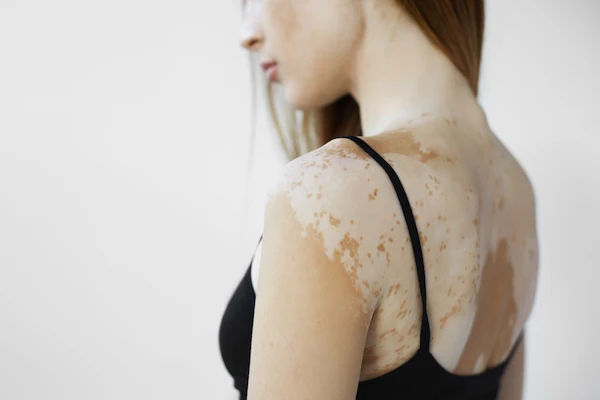- male
- 30 Years
- 22/01/2025
I've got this yellow spot on my inner thigh that's about the size of a thumbnail, and it's halfway up my leg. I dont recall getting hurt or anything like that, and I dont play any sports. Should I be worried about this? What could it be?
Answered by 1 Apollo Doctors
The yellow spot on your inner thigh could be a fatty deposit, a sebaceous cyst, or a skin condition like eczema or dermatitis, but it's also possible it could be a symptom of a more serious condition, so it's best to consult a dermatologist for a proper examination and diagnosis to determine the cause and appropriate treatment.
Dr. Chandra Suggests...
Consult a Dermatologist
Answered 04/07/2025
0
0

More Dermatology Health Queries
View allI'm considering getting hair fixing done, and I'm a bit concerned about how strong it really is. Like, if someone accidentally pulls or picks at it, is there a chance it could come loose? I'm feeling a bit anxious about it not being secure.
See a specialist for accurate diagnosis and targeted treatment.
Answered by 1 Apollo Doctors
I'm using aziderm cream instead of the aziderm gel that my doctor suggested. Is there any chance it might cause a reaction or any issues with my skin? I'm a bit worried about if it might feel different or cause any irritation.
Aziderm contains azelaic acid, which is commonly used to treat certain skin conditions like acne. The primary difference between a gel and a cream formulation lies in their base composition. Gels are usually water-based, tend to be lighter, and can be more suitable for oily or acne-prone skin. Creams, on the other hand, are often oil-based, thicker, and might be more appropriate for dry or sensitive skin. Using Aziderm cream instead of gel should generally be safe, but keep the following points in mind: Skin Type Compatibility: If you have very oily or acne-prone skin, a gel might penetrate better without leaving a greasy feeling. If your skin is more on the dry or sensitive side, a cream might be more soothing. Irritation Potential: Both formulations can potentially cause some irritation, especially if your skin is sensitive to azelaic acid. Watch for redness, stinging, or peeling. If you experience significant discomfort, consider discontinuing use or reducing the frequency of application. Application Tips: Apply a thin layer to the affected area. Start using it once daily to see how your skin reacts, then gradually increase to twice daily if needed. Moisturizer: If you notice dryness, applying a non-comedogenic moisturizer after the cream may help. Sun Protection: Ensure you use adequate sun protection, as azelaic acid can make your skin more sensitive to the sun.
Answered by 1 Apollo Doctors
I've been struggling with hidradenitis suppurativa for years and tried tablets with no relief. Recently had surgery but still no improvement. My doctor suggested Humira injections - is this a good option? Also, could you recommend the best specialists for this in Ahmedabad or nearby areas in Gujarat? What are the names of similar injections available in India?
Humira (adalimumab) is an option for treating hidradenitis suppurativa (HS), especially when other treatments have failed. It's a biologic drug that helps reduce inflammation, a key factor in HS. If your doctor recommends Humira, it's worth exploring, but it's crucial to discuss potential side effects and risks with them. Other similar injections, also biologics, available in India for HS include BIMZELX® (bimekizumab-bkzx) and COSENTYX® (secukinumab)
Answered by 1 Apollo Doctors
Disclaimer: Answers on Apollo 247 are not intended to replace your doctor advice. Always seek help of a professional doctor in case of an medical emergency or ailment.





